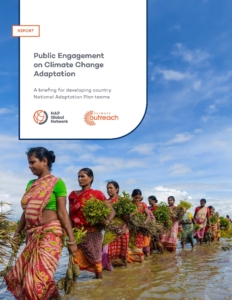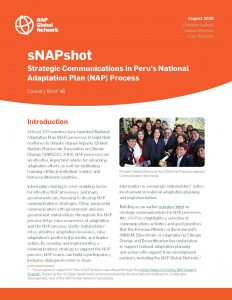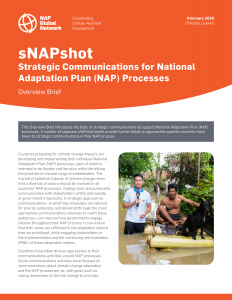A strategic approach to communications—in which the right messages, through the right channels, reach the right audiences—can improve how governments engage stakeholders and citizens throughout their NAP process.
Strategic communications can help support the achievement of goals at different moments of the NAP process, including the initiation and development of the NAP process, implementation of the adaptation actions identified through the NAP process, and communicating the results of adaptation actions during monitoring and evaluation.
Three essential factors for effective communications are:
- Clear, measurable objectives. In the NAP process, these objectives could include building high-level support for the NAP process; engaging citizens through raising awareness of adaptation; sharing information across ministries; or raising donors’ awareness of adaptation priorities.
- Knowing who you want to reach. Your audiences should be selected based on who you need to engage in order to advance the NAP process, and could include parliamentarians, local authorities, communities, civil society and the private sector.
- Tailored, compelling messages. These messages should be developed through careful consideration of your audiences’ values, interests and motivations, and should be conveyed through the most appropriate communication channels to reach your target audience.



